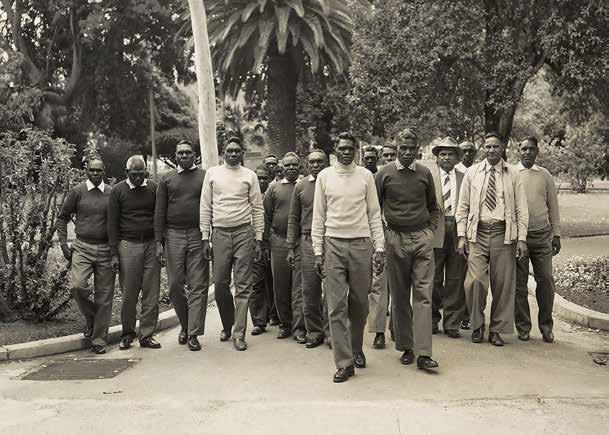
3 minute read
Remembering the Pilbara Strikes
from YMAC News Issue 42
by YMAC
2021 marks the 75th anniversary of the landmark Pilbara pastoral strike, which is now recognised as Australia’s longest strike. On May 1, 1946 around 800 Aboriginal workers and their families walked off stations across the Pilbara where they were being forced to work. This action was despite great danger and lasted for months following, to protest poor wages and living conditions, and their battle for justice.
They had been disinherited of their land by the squatters and government and forced to work for decades on the stations for meagre rations, and little or no wages; their lives subject to the whims of pastoralists, government agents and legislators.
Advertisement
Many strikers said they lived no better than slaves.
“We didn’t live in houses or anything. We had to go down to the creek like kangaroos. We just want to be treated like human beings, not cattle.” Nyangumarta woman and strike leader, the late Daisy Bindi, who led around 90 people in the walk-off from Roy Hill station.
Nyamal Lawman and strike leader, the late Peter Coppin.
Large numbers of strikers joined the cause during the Port Hedland races weekend in August 1946, refusing to return to stations when the races finished. Peter Coppin had a gun pulled on him by a police officer during one stand-off. Another strike leader, Ernie Mitchell, was arrested but later released.
The idea to strike was first proposed by Don McLeod, a white miner and fencer who witnessed the treatment of Aboriginal workers and became increasingly disturbed by the inequality and exploitation. He made strong connections with the Aboriginal men working for him, and paid them good wages. Word spread among station workers about the difference in their treatment.
McLeod explained a strike concept to a large Law meeting held at Skull Springs in 1942. It was proposed to hold a mass station walk-off when the World War Two ended. May 1 was chosen as it was International Workers’ Day. A plan was hatched to spread the strike date to the station workers. It was marked with a cross on hand-drawn calendars secretly delivered to the station workers by Lawmen and strike leaders, Dooley Bin Bin and Clancy McKenna.
For three years the strikers endured great hardship, physical danger, starvation, violence, and threats. There were chaining’s and gaoling’s of strikers, including Clancy McKenna and Dooley Bin Bin, and McLeod was fined for ‘inciting natives.
Members of the 1946 Pilbara Strike take Native Affairs Minister S G Middleton and the ABC to court in 1958
Camps were set up across the Pilbara, including at Two Mile, Four Mile, Twelve Mile (Tjalku Wara) and Moolyella, where families and groups lived. The strikers also questioned the laws that governed their lives; laws that meant they had no right to marry without permission from the ‘Protector of Natives,’ no right to demand wages for their work, no right to education, no right to enter towns after dusk, and no right to vote.
Strikers received moral and financial support for their cause from several organisations, the issue was also raised at the United Nations. Finally, the strike forced changes that helped initiate the restoration and recognition of their basic human rights.
While the Strike is recognised as concluding in 1949, there was no official ending. There are people who still claim to be on strike as they never went back to work on the stations.
YMAC thanks Remembering the Pilbara Strike member, writer and playwright Jolly Read for her contribution to this story.

Want to know about Anniversary events?
Join the ‘Remembering the 1946 Pilbara Strike’ Facebook page, and visit ymac.org.au/blog/ for event updates from the Pilbara. Learn: www.wangkamaya.org.au/pilbara-history-andculture/01-the-1946-strike www.pilbarastrike.org









